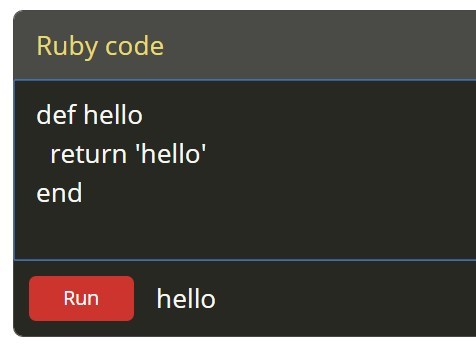

- Homebrew must be run under ruby install#
- Homebrew must be run under ruby update#
- Homebrew must be run under ruby upgrade#
- Homebrew must be run under ruby mac#
That's not enough in some cases, though, and the fact that `ruby-build` compiles its own version of OpenSSL has some downsides.
Homebrew must be run under ruby install#
One exception is `ruby-build` (the tool that both `rbenv` and `asdf` use to install Ruby) which uses an appropriate version of OpenSSL depending on the Ruby version. However, most version managers use the same settings for all versions. In addition, the way Ruby needs to be configured depends on the Ruby version. This makes sense because modifying anything would require deep knowledge of how Ruby configuration and compilation works. Note that these version managers allow you to override some or all Ruby configuration settings, but the vast majority of people use the default settings. Whether or not you have prerequisite tools installed (many version managers don't install them for you)Įach version manager configures Ruby differently, which is why you might be able to install a particular version with "ruby-instal" for example, but not with "asdf" or "rbenv".How the version manager configured Ruby.The reason why some version managers can't install certain versions of Ruby is because they all compile Ruby from scratch, and whether or not the installation succeeds depends on five main factors:
Homebrew must be run under ruby mac#
The problem is that these version managers (when used out of the box with their default settings) fail to install Ruby 2.6.x on any Mac running on macOS Ventura (13.x), and in some cases on the latest version of Monterey (12.6.x) that has version 14 or higher of Apple's command line tools (CLT).Īssuming you have Homebrew installed, you can check which version of the CLT you have by running `brew config`, and then look towards the bottom for the lines that start with "CLT:" and/or "Xcode:"

The most popular ones are asdf, chruby/ruby-install, frum, rbenv/ruby-build, and rvm. These tools, known as version managers, can install multiple versions of Ruby at the same time, and let you easily switch between them. Instead, you'll want to use a special tool that can install a separate version of Ruby that doesn't interfere with the one that Apple installed. Read my article that goes over 5 reasons why you shouldn't use the system Ruby on macOS. However, this version of Ruby preinstalled by Apple is not meant to be used for development. That proves that it is possible to install it on Ventura on both Intel and Apple Silicon Macs. Yet, Ventura comes preinstalled with Ruby 2.6.10 on all Macs. Some people will tell you that Ruby 2.6 is not compatible with Apple Silicon Macs.
Homebrew must be run under ruby upgrade#
This is super important to understand, so please read my guide that explains how and why to upgrade the Ruby version in your project. Note that you can also go straight from 2.6.x to 2.7.7. And then the next thing you want to prioritize is updating it to 2.7.7 because Ruby 2.6 reached end of life in March 2022, which means it has known bugs and security issues that will never be fixed.
Homebrew must be run under ruby update#
Instead, it's recommended to update the project to at least the latest patch version (the third digit).įor example, if your project is currently using Ruby 2.6.6, or any version of 2.6 lower than 2.6.10, the first thing I recommend you do is update it to 2.6.10. They get stuck because they think they have to use the version of Ruby that's specified in the project's `.ruby-version` and/or `Gemfile`. This is another common source of confusion because people don't understand how Ruby versioning works. Wait, do your solutions only work with 2.6.10? I need an older version!


 0 kommentar(er)
0 kommentar(er)
